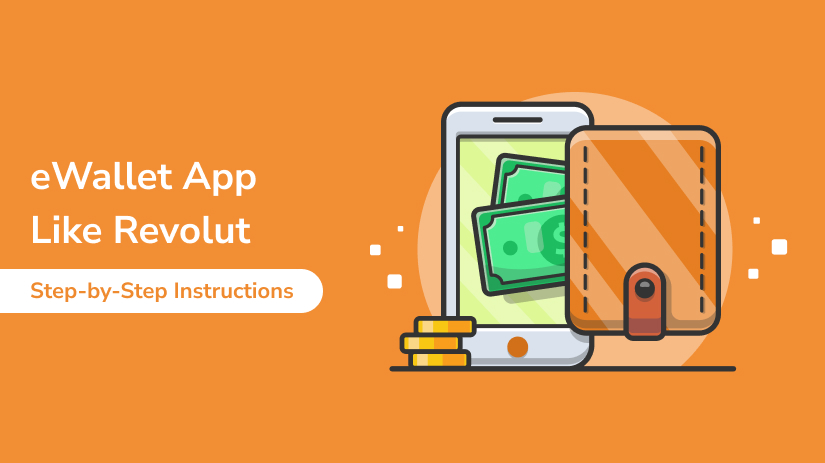In the rapidly evolving fintech industry, developing an eWallet app like Revolut can be a game-changer. Such apps offer a seamless way to manage money, transfer funds, and access financial services on the go.
If you’re considering entering the market with your own payment app, this guide will provide you with a step-by-step approach to successful eWallet app development.
Step 1: Market Research and Feasibility Study
Before diving into the development process, conduct thorough market research. Identify your target audience, analyze competitors, and understand the regulatory requirements for your region. This initial step is crucial to determine the feasibility and potential success of your project.
Step 2: Define Core Features
To build a competitive eWallet app, you need to define the core features that will make your app stand out. Here are some essential features to consider:
- User Registration and Authentication: Secure sign-up and login processes using OTP, biometrics, or two-factor authentication.
- Multi-Currency Wallet: Support for multiple currencies, enabling users to hold and exchange different currencies within the app.
- Money Transfers: Seamless domestic and international money transfer in money transfer software development with low fees and quick processing times.
- Payment Integration: Support for various payment methods, including credit/debit cards, bank transfers, and integration with popular payment gateways.
- Expense Tracking: Tools for users to monitor their spending and manage budgets.
- Customer Support: In-app customer service for handling queries and issues promptly.
Connect with us for Fintech Development Needs
Trusted by companies like Plaid, Yodlee, Codat.
Step 3: Choose the Right Technology Stack
Selecting the appropriate technology stack is critical for the success of your eWallet app. Here’s a recommended stack:
- Front-end Development: Use React Native or Flutter for cross-platform compatibility.
- Back-end Development: Ruby on Rails is a robust choice due to its security features and developer-friendly environment.
- Database: PostgreSQL for efficient data management.
- Payment Processing: Integrate with trusted payment gateways like Stripe or PayPal.
- Security: Implement advanced security measures such as SSL encryption, tokenization, and regular security audits.
Step 4: Design User-Friendly UI/UX
User experience is paramount in fintech applications. Hire skilled UI/UX designers to create an intuitive and visually appealing interface. Ensure that the navigation is straightforward, and users can easily access all features without confusion.
Step 5: Development Phase
During the development phase, your fintech developers will bring the design and features to life. Here’s how to go about it:
- Front-end Development: Focus on creating responsive and interactive interfaces.
- Back-end Development: Develop the server, database, and application logic. Ruby on Rails developers will be instrumental in this phase, ensuring the app’s stability and security.
- Integration: Integrate third-party services such as payment gateways, currency exchange APIs, and authentication services.
Connect with us for Fintech Development Needs
Trusted by companies like Plaid, Yodlee, Codat.
Step 6: Testing
Testing is a critical phase to identify and fix bugs before the app goes live. Conduct comprehensive testing, including:
- Unit Testing: To check individual components.
- Integration Testing: To ensure all parts of the app work together seamlessly.
- Security Testing: To identify vulnerabilities and ensure data protection.
- User Acceptance Testing (UAT): To get feedback from real users and make necessary adjustments.
Step 7: Deployment and Launch
Once testing is complete, deploy the app to app stores (Google Play and Apple App Store). Ensure all regulatory compliances are met before the launch. Promote your app through various channels to reach your target audience.
Step 8: Post-Launch Support and Updates
After the launch, continuous support and updates are essential to keep your app relevant and secure. Address user feedback promptly and introduce new features to enhance user experience.
Step 9: Fundraising for Further Development
If you’re planning to expand your app’s features or scale your operations, consider fundraising. Develop comprehensive fundraising software for nonprofits to streamline the process and attract potential investors. Highlight the app’s success, user base, and future potential to secure the necessary funding.
Conclusion
Developing an eWallet app like Revolut involves meticulous planning, a robust technology stack, and skilled fintech developers. By following these step-by-step instructions, you can create a competitive and user-friendly eWallet app that meets market demands.
Whether you need payment app development or money transfer software development, investing in the right technology and talent is key to your success.
For more insights and expert assistance in developing your fintech app, connect with our experienced team of Ruby on Rails developers and fintech specialists today!
Happy eWallet App Development!!
Connect with us for Fintech Development Needs
Trusted by companies like Plaid, Yodlee, Codat.





